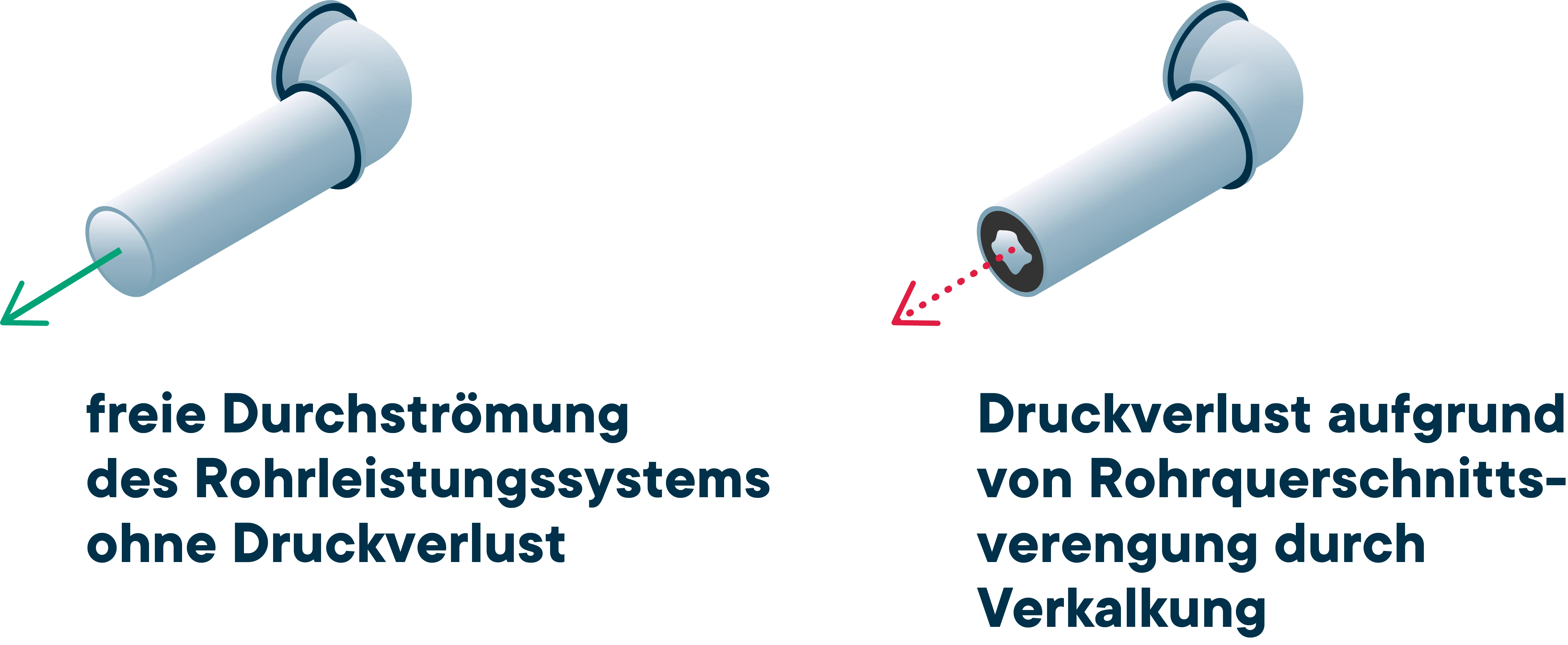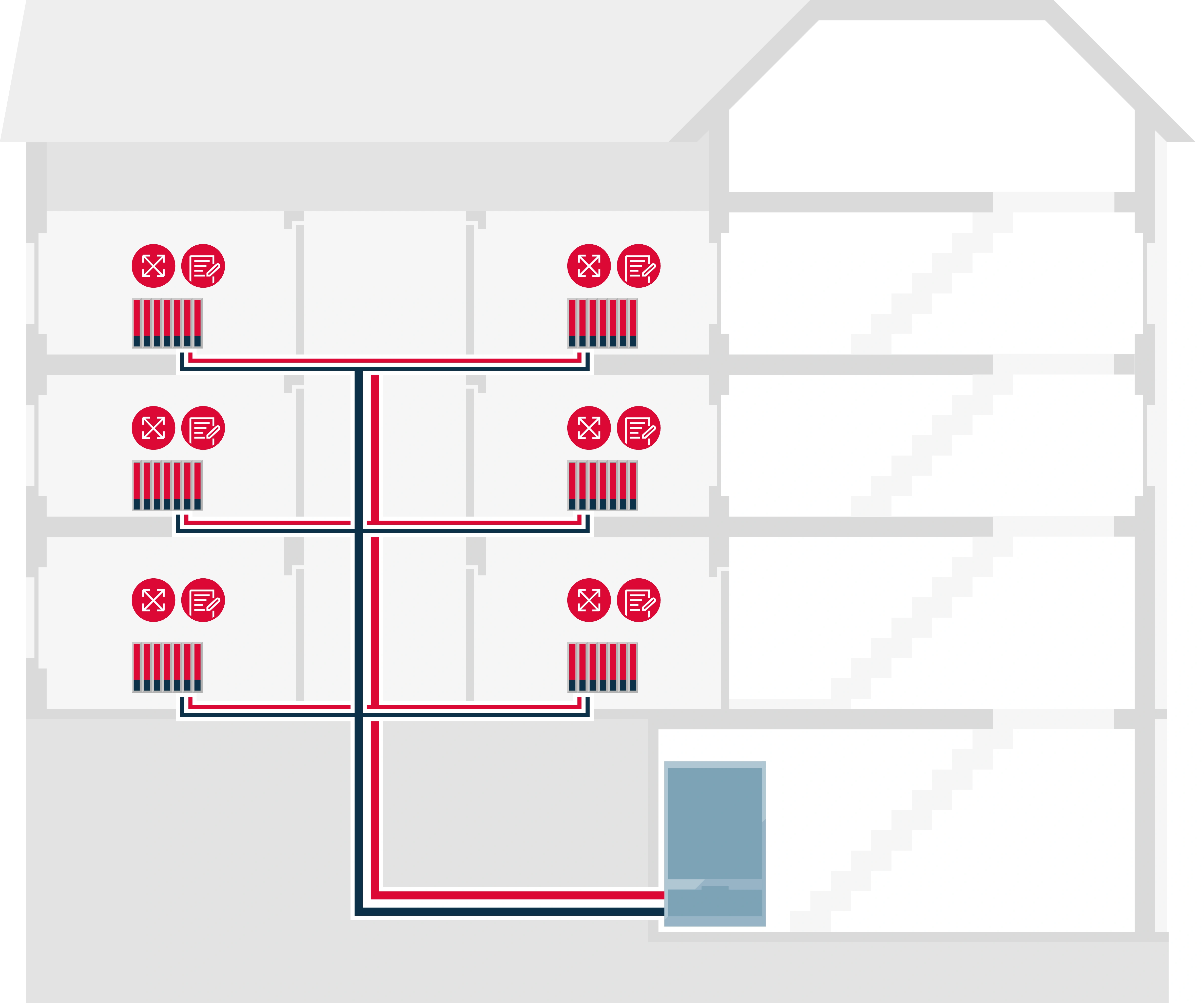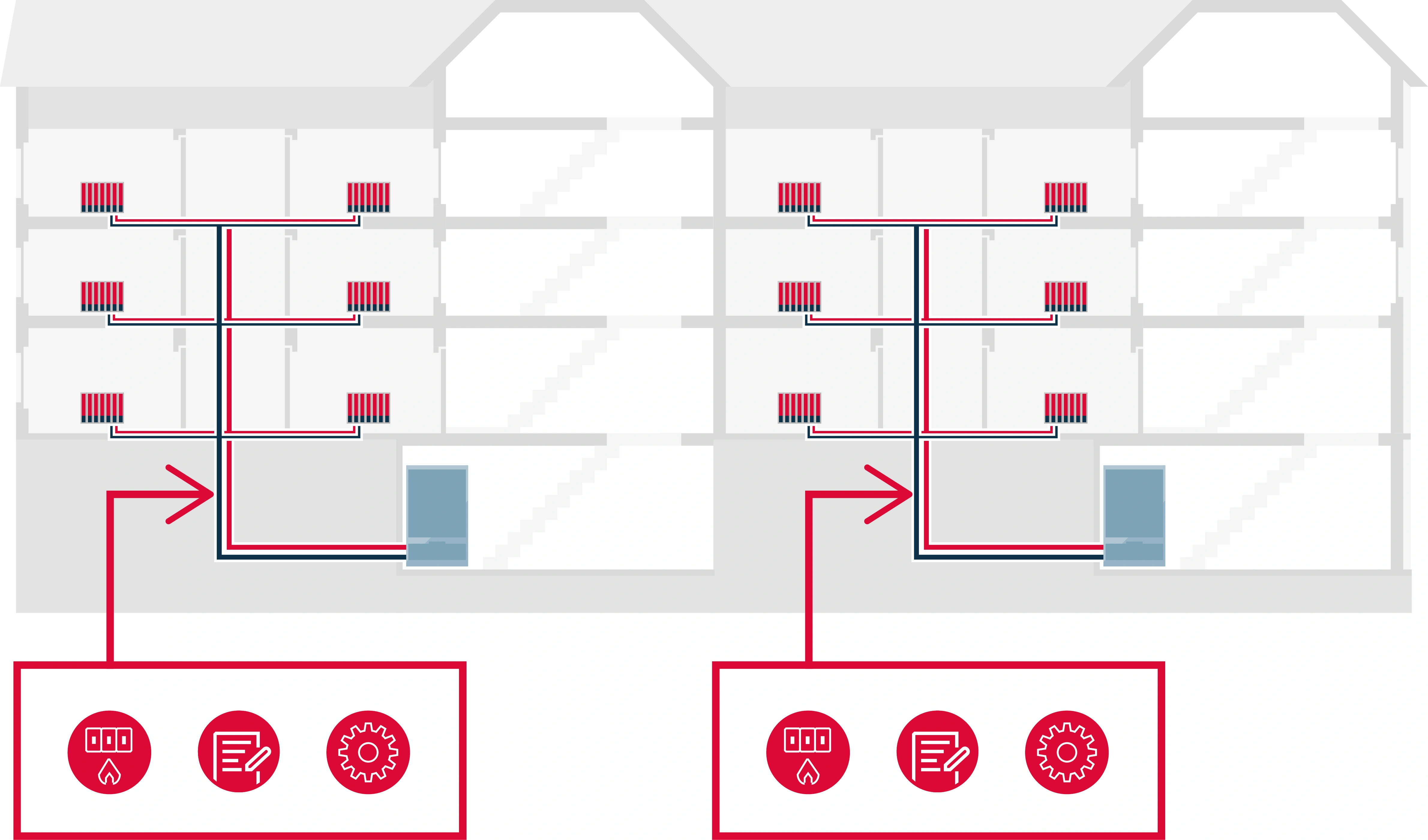Hydraulic balancing and heating system check in existing buildings
Increase the energy efficiency of your heating systems
If the flow rates of hot water to individual radiators in the heating system are not properly coordinated, it can lead to disparities in energy distribution and room temperature.
Hydraulic balancing ensures the even distribution of hot water in the heating system. The goal is to increase energy efficiency.
Technically, this means that the right amount of hot water with the correct pressure reaches each radiator in the property to achieve optimal heat distribution.
Hydraulic balancing not only enhances living comfort but, above all, promotes energy savings as the heating system operates more efficiently and consumesess energy.
We help you implement the requirements of the new energy-saving regulation.
The "Regulation for Ensuring Energy Supply through Medium-Term Effective Measures," abbreviated as EnSimiMaV, establishes certain requirements to improve the energy efficiency of buildings. Hydraulic balancing is an important part of these requirements to reduce the energy consumption of heating systems.
Property owners and builders must ensure that hydraulic balancing is professionally implemented for renovated or newly constructed heating systems in accordance with EnSimiMaV.
Additionally, hydraulic balancing is often a key requirement for government subsidies and financial support for energy renovation measures.
Here's what you need to consider with hydraulic balancing in existing buildings
The type of heating and heating systems varies from building to building. To implement hydraulic balancing in existing buildings, the following specific considerations need to be considered. It is recommended to start with a thorough analysis of the existing heating system to provide an informed assessment and planning for further modernization measures.
How is the insulation and heat demand?
Different insulation levels and diverse heat demands make the calculation of heating loads along with the planning of hydraulic balancing in existing buildings more complex. This requires a thorough analysis of the building structure.
What types of radiators were installed?
In existing buildings, there are often a variety of radiators of different sizes, types, and ages. This fact leads to increased complexity in performing hydraulic balancing because radiators may not be optimally matched with each other.

Is the building's piping system intact?
Especially in older existing buildings, piping problems can occur. For example, if pipes and valves show signs of wear or no longer meet current standards, this can complicate the execution of hydraulic balancing.

Is hydraulic balancing directly achievable in the existing system?
In many existing buildings, heating systems are installed that may require structural additional measures, such as the installation of valves, to implement the calculated hydraulic balancing.
With these solutions, we implement hydraulic balancing in your existing building.
Our heating engineers offer you two approaches to implement hydraulic balancing for your heating systems. The method depends on factors such as the type of heating system, existing components, and the building situation. Here are some common methods:
Solution #01
Classic Hydraulic Balancing - EN.Hydra

With this method, the flow rates in each housing unit are calculated. Each heating unit is individually measured and calculated. Based on these calculations, the flow rates are adjusted to ensure the even distribution of heating water. Upon separate commissioning, we can also take care of the installation of new thermostat valves for you.
Our services
- Calculation of optimal flow rates
- Preparation of instructions for adjusting the adapted flow rates
- Optional installation of new thermostat valves provided
Advantage
- Keine laufenden Kosten
Disadvantages
- Time-consuming as each apartment is individually measured
- No real-time monitoring of various consumption
- No adaptation to user behavior beyond the DIN standard
- High initial investment costs
Solution #02
Automated Hydraulic Balancing - EN.Valve

By installing valves in the individual vertical heating pipes, even heat distribution between the respective floors is achieved.
At the same time, we create the foundation for building automation since all consumption is measured in real-time, enabling the calculation of additional savings potentials.
The advantage: We do not need to measure each housing unit or each heating appliance individually.
For automated hydraulic balancing, we offer our customers a contracting model.
Automated hydraulic balancing as a contracting model
The 'All-Inclusive Package'
From the installation of the hardware to the ongoing fine-tuning - we take care of adjusting your heating system through automated hydraulic balancing.
Our services
- Installation of hardware > Valves including sensors and actuators
- Provision of a router including internet costs
- Operation of EN.Valve hardware through a portal and our own EN.Valve logic
- Provision of server infrastructure
- Adjustment of EN.Valve to the individual characteristics of the building, including fine-tuning
- Transmission of consumption data (e.g., as a basis for ESG reports)
Advantages
- No need to measure individual housing units / radiators
- Measurement of various consumptions in real-time
- Basis for calculating additional savings potentials
- Basis for calculating renewable heat supply
- No initial investment costs
Disadvantage
- Ongoing costs

